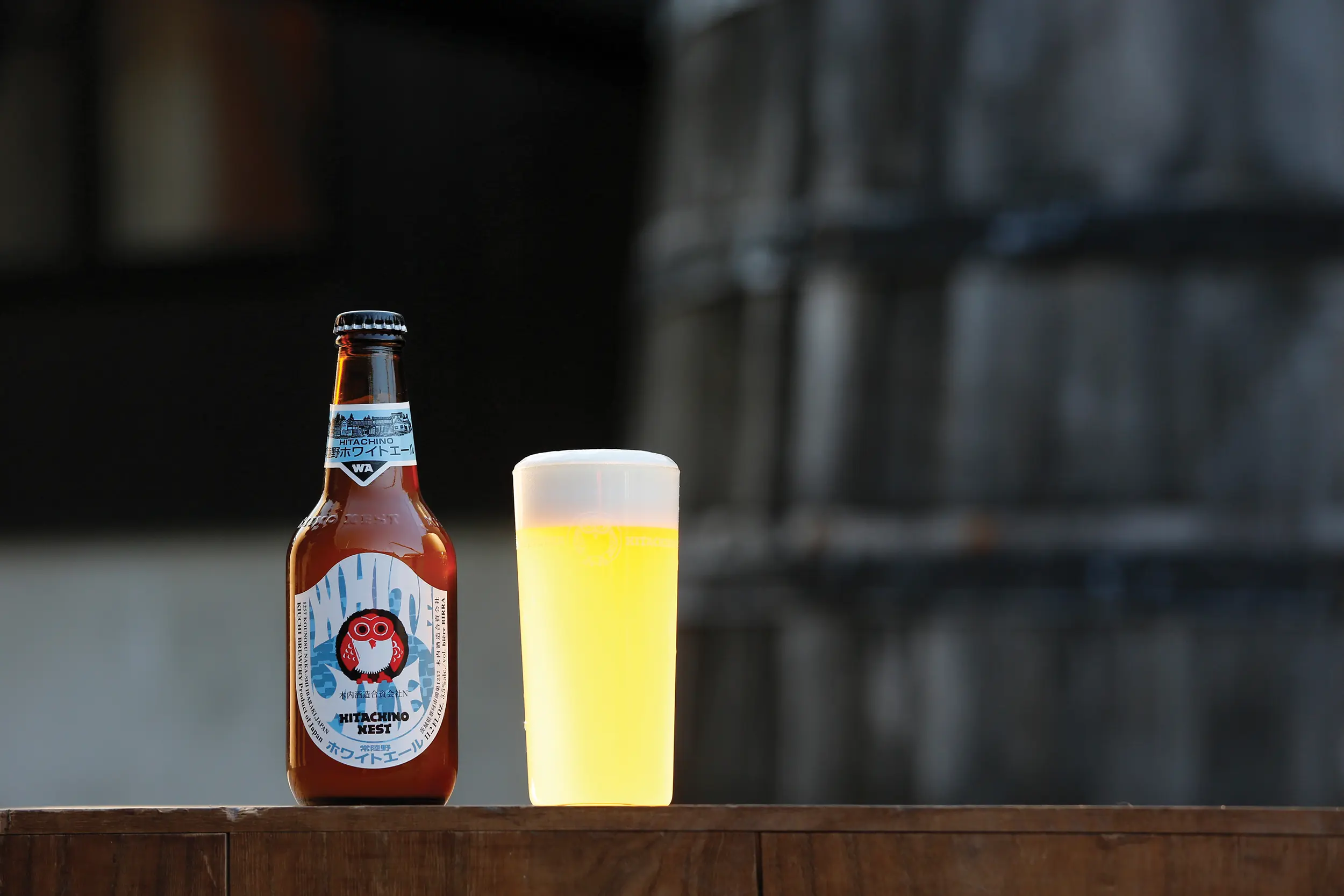Witbiers
A style with global influence has found a home in Colorado
Written by Lesli Gegen
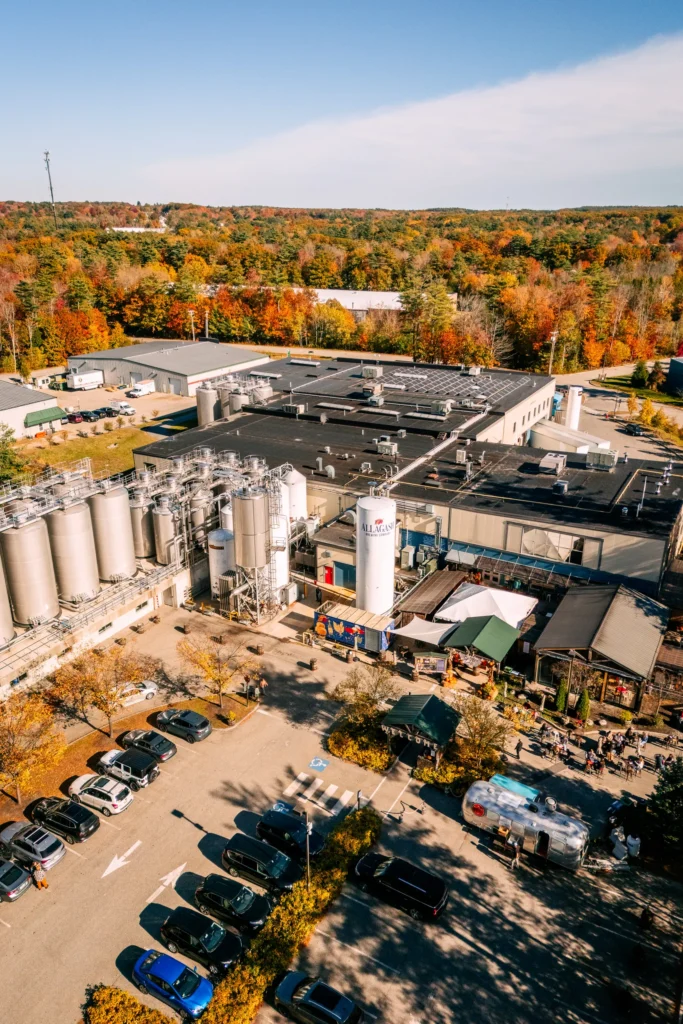
Allagash Brewing Co. in Portland, Maine. Photo courtesy Mat Trogner C/O Allagash Brewing Co.
Witbiers, white beers. Tomayto, tomahto. Witbier literally translates from Dutch to “white” beer, so it’s no surprise that the two names are used interchangeably and cause confusion for some.
Whatever your preference, the style’s origins are undeniable. Tracing back to 14th-century Belgium, Witbier fell out of favor in the mid-20th century. That was until a Belgian brewer named Pierre Celis revived the tradition in the 1960s and created the modern-day version of the style, a beer known as Hoegaarden. As Marco Passarella, sales manager at the Belgium-based brewery St. Bernardus describes it, “Pierre single handedly brought Witbier back from the dead. He is seen as the godfather of Witbier.”
While the style originated across the Atlantic, here in the United States, there’s no more iconic Witbier than Allagash Brewing Company’s Allagash White.
Beyond the history, if you are unsure what makes a Witbier a Witbier, you’re not alone. In fact, one of the most popular posts on Allagash’s blog is titled “What is: Wheat Beer vs. Witbier vs. Hefeweizen,” because it’s tough to explain, even for the experts. While all three use wheat as a primary ingredient, that’s about where the similarities end.
Witbiers are brewed with raw, unmalted wheat, which gives the style a signature cloudy look, and are spiced with coriander, orange peel and other spices, giving them a refreshing, citrusy flavor profile. They also always use Belgian yeast strains, which contribute fruity esters to the final product and add a level of complexity to the finished product. As Allagash describes it, “spices should never be over the top, but just enough to have you wondering, hmmm what is that?”
In any case, it’s an exciting time for beer drinkers in Colorado as they no longer need to resort to creative suitcase solutions to bring home Allagash White from the East Coast. The brewery is one of the newest members of Elite Brands’ portfolio, making its flagship beer, the world’s most awarded Witbier, available in Colorado once again, marking the largest distribution footprint for the Maine-based beer brand in nearly fifteen years.

Rob Tod, founder of Allagash Brewing Co.. Photo courtesy Allagash Brewing Company.
Allagash’s founder Rob Tod began his brewing career at Otter Creek Brewing Company in Vermont. It was during after-work beer tastings that he first encountered Celis White, a groundbreaking Witbier from the ‘godfather of Witbier’ that inspired him to start his own brewery. In 1995, Allagash Brewing Company was born in Portland, Maine, with a focus on Witbier because, as Rob puts it, he “didn’t want to be doing what everyone else was doing.” Which, at the time leaned heavily into British-style ales and pale ales.
Even though Rob was impressed with the style out of the gate, the same can’t be said for the market. For a decade, he championed the Witbier style through some good-natured teasing from fellow brewers about the cloudy nature of his beers.
Although they weren’t winning popularity contests quite yet, they were catching the attention of some heavy hitters in the industry and the awards started to roll in not long after Allagash was founded. In 1998, Allagash White won its first gold medal at the World Beer Cup, followed by several other gold medals, including the Great American Beer Festival in 2002 and 2005, World Beer Cup again in 2010, 2012 and 2015. For Rob and brewmaster Jason Perkins, the awards are a recognition of the continued quality of Allagash’s beer, which is one of the most important things for them. “We’ve spent years working very hard on quality and consistency, which are integral to our core values,” explained Rob.
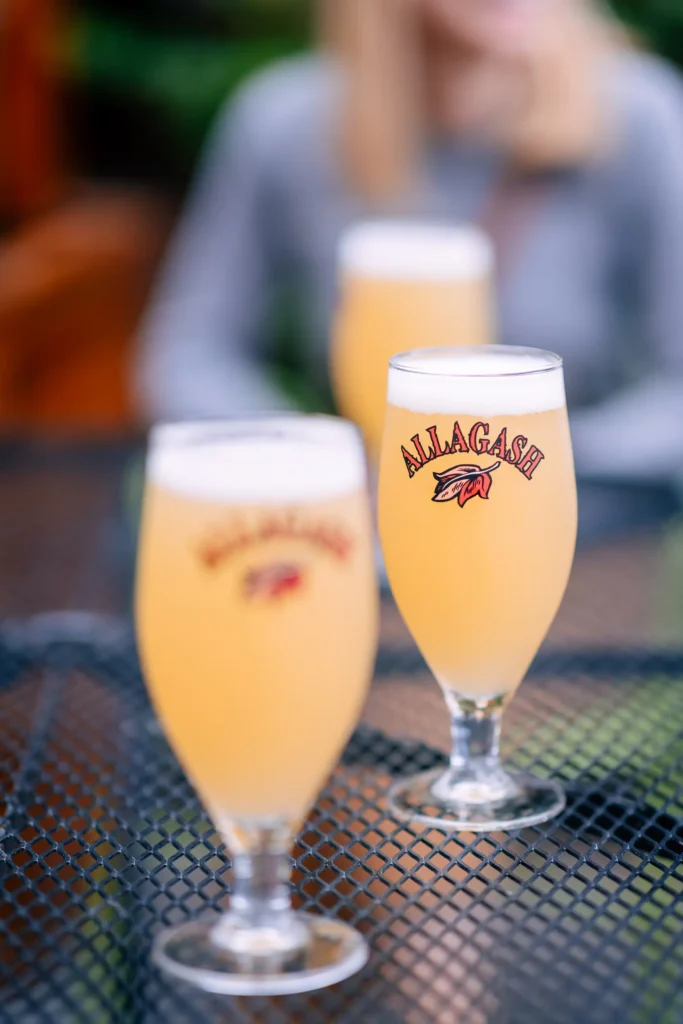
Photo courtesy Allagash Brewing Company.
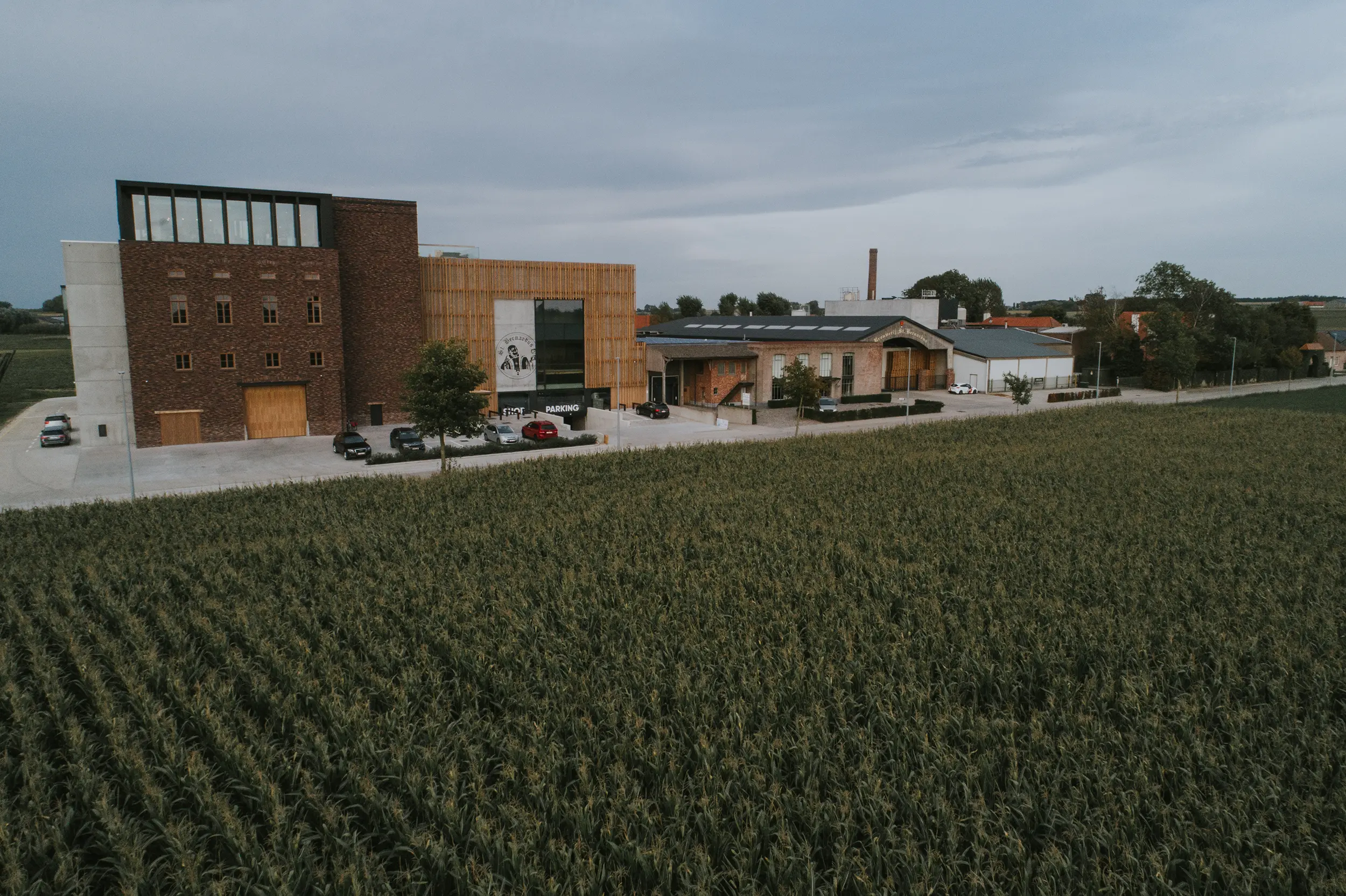
St. Bernardus Brewery in Watou, Belgium. Photo courtesy St. Bernardus.

His dedication to quality and belief in the style eventually paid off, as Witbier began to gain traction in Portland and beyond. And his influence on the popularity of the style here in the United States is recognized around the world.
Returning to Witbier’s roots, Belgium’s St. Bernardus Brewery has extremely close ties to Pierre Celis, the reviver of Witbier. With a deep-rooted history tied to Trappist monasteries, St. Bernardus embarked on its Witbier journey in 1992 after their license to brew beer for the Trappist monks came to an end and they sought to complete their portfolio as an independent brewery. Unfortunately, their initial takes on the style fell flat. As Marco explained, “We didn’t get the recipe right. It wasn’t hazy or citrusy enough. It didn’t have that pizzazz.” To perfect their recipe, they called on their friend Pierre, who gave St. Bernardus insight on how to strike the difficult balance in both ingredients and timing. Today, their St. Bernardus Wit is widely regarded as one of the best Witbiers on the market.
While St. Bernardus Wit may not be their top-selling beer in Belgium, it’s incredibly popular in the U.S. Marco attributes this success, in part, to the influence of breweries like Allagash. “Allagash is so popular, that they also make the style popular,” he explains. “You can’t make a style popular by yourself. It takes a collective effort to elevate a specific beer style, and we’re proud to work alongside them to grow the category.”
When speaking more broadly about the influence of Belgium beer in the states, Marco shares that “Witbier is considered a very traditional style. It’s not a trend, it’s something that’s here to stay. In Belgium, we’re happy to see America embrace that tradition.”
With that, it’s no surprise that Marco is a fan of the classics and he’s happy that St. Bernardus isn’t messing with a good thing, even as they modernize their brewing process. “We stick to our recipe and the traditional brewing methods,” he explains. “Our new brewhouse is equipped with state-of-the-art technology, but we still rely on age-old techniques like gravity filtration.” This blend of tradition and innovation allows St. Bernardus to maintain the integrity of their beers while embracing modern advancements.
Similar to St. Bernardus, Allagash isn’t messing with a good thing. While the iconic Allagash White remains unchanged, the undercurrent of Allagash as a brewery is giving people new experiences with beer. To stay true to those roots, the brewery’s research and development program encourages experimentation. Ideas from employees are brought to life alongside their brewing team, and highly rated pilot beers become larger releases, like Ski House, a higher ABV Witbier with ginger notes.
Interestingly, Japan’s Kiuchi Brewery, with a 200-year history rooted in sake production, has also made a significant contribution to the Witbier style. When Japan’s strict tax laws were relaxed in 1994 to allow smaller breweries to begin production, Kiuchi seized the opportunity to brew year-round, as sake brewing typically takes place in the autumn and winter seasons. The brother-run brewery started to brew the now-famous Hitachino Nest White Ale, which quickly became a style favorite and stole hearts of craft beer enthusiasts everywhere with its distinctive owl label. In fact, it’s so popular that even as Japan’s biggest craft brewery, fifty percent of Kiuchi’s production is the Hitachino Nest White Ale.
For ninth-generation owner, Toshiyuki Kiuchi, Japanese food is very simple and delicious, so it only makes sense that the goal for their White Ale is to be described in the same way. The Hitachino Nest White Ale is a refreshing, mildly hopped witbier brewed with coriander, nutmeg, orange peel, and fresh orange juice. Its citrusy, sweet-fruity-tart flavor profile, balanced use of coriander, and beautiful golden hue make it a unique and delicious interpretation of the Belgian Witbier style.
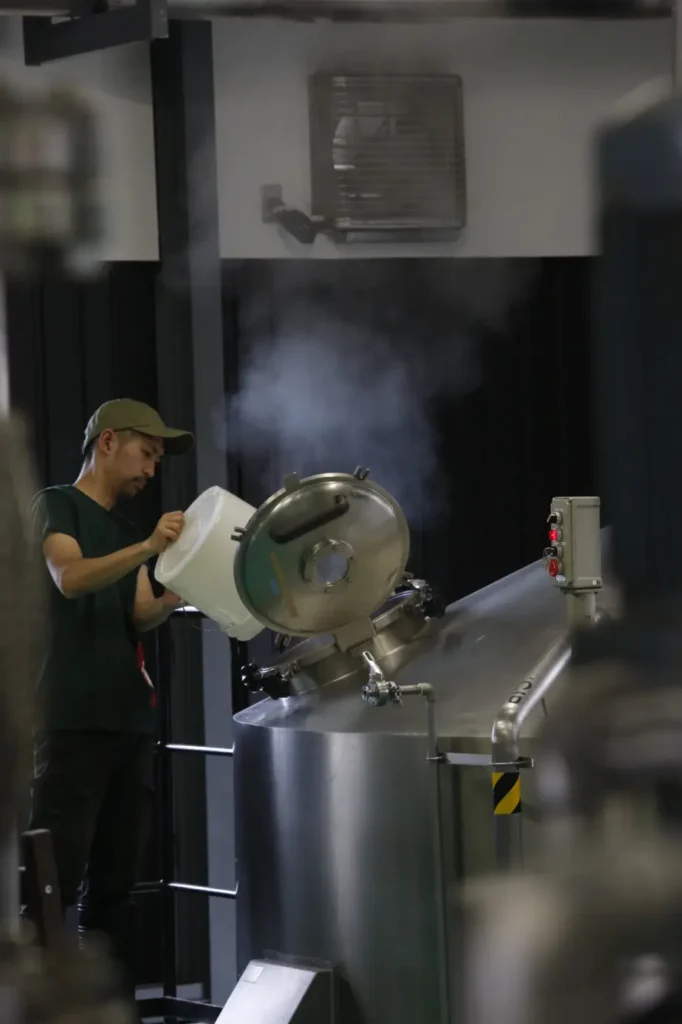
Kiuchi Brewery in Ibaraki-ken Naka-gun, Japan. Photo courtesy Kiuchi Brewery.
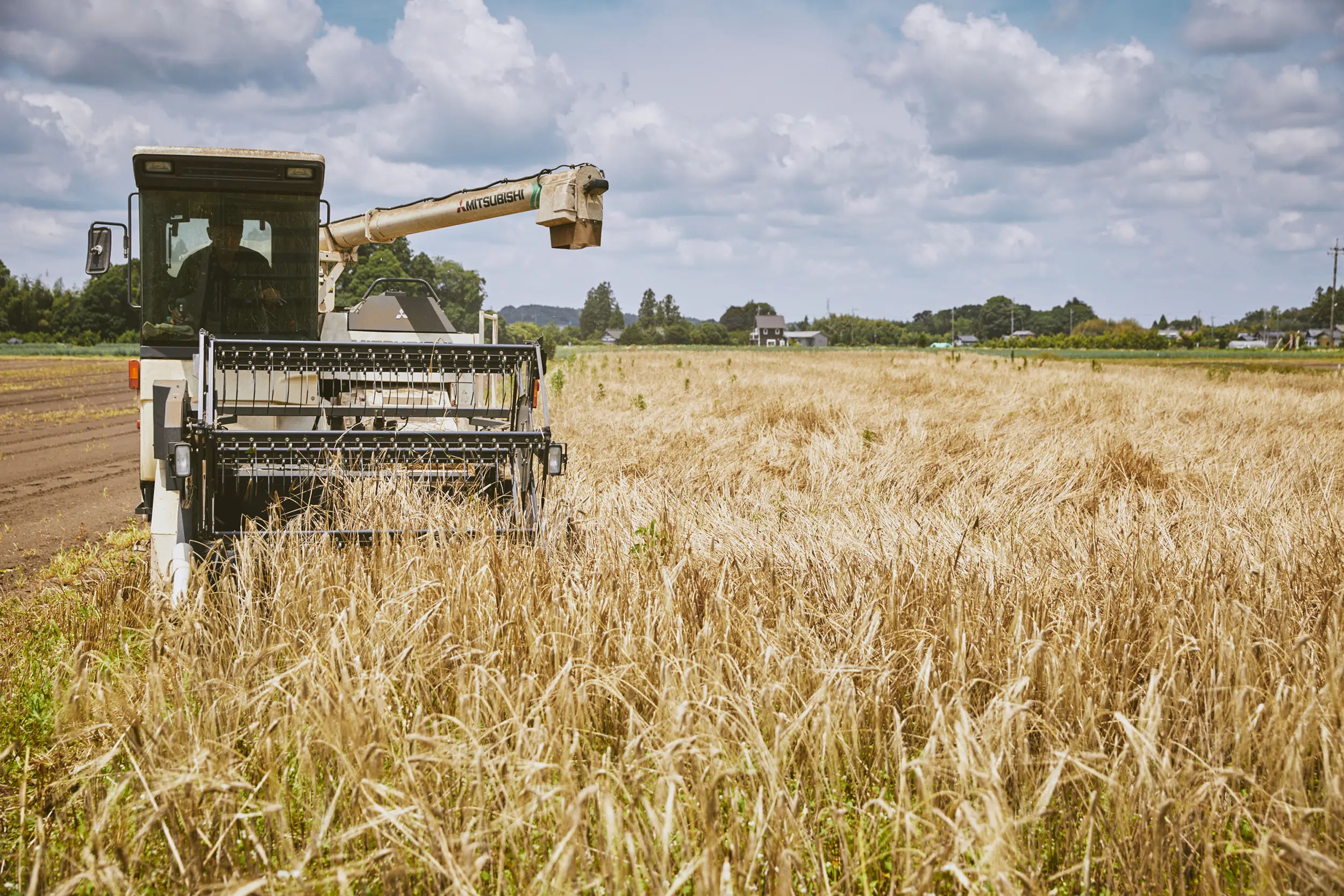
Photo courtesy Kiuchi Brewery.
The pride in a Japanese version of the traditional Belgian style runs deep for the family behind Kiuchi Brewery. In fact, the brand ‘Hitachino Nest’ reflects the Kiuchi family’s pride in sourcing ingredients from the fertile Hitachino Province. Looking into the future, their goal is to use 100 percent local ingredients.
Whether you’re sipping on a classic Allagash White, a historic St. Bernardus Wit, or a unique Japanese interpretation from Kiuchi Brewery, there’s a Witbier out there for everyone. And even though Belgium can lay claim on the origination of the Witbier style, the inspiration isn’t only flowing one way. “I visited a few breweries in America, and they all had really nice tap rooms and I thought, this is something we need to have,” shared Marco Passarella, sales manager at St. Bernardus. “So, we built a beautiful rooftop bar here at the brewery.” Needless to say, next time you’re in Europe, stop by, get a pint and cheers to a style that’s inspired breweries around the world.
